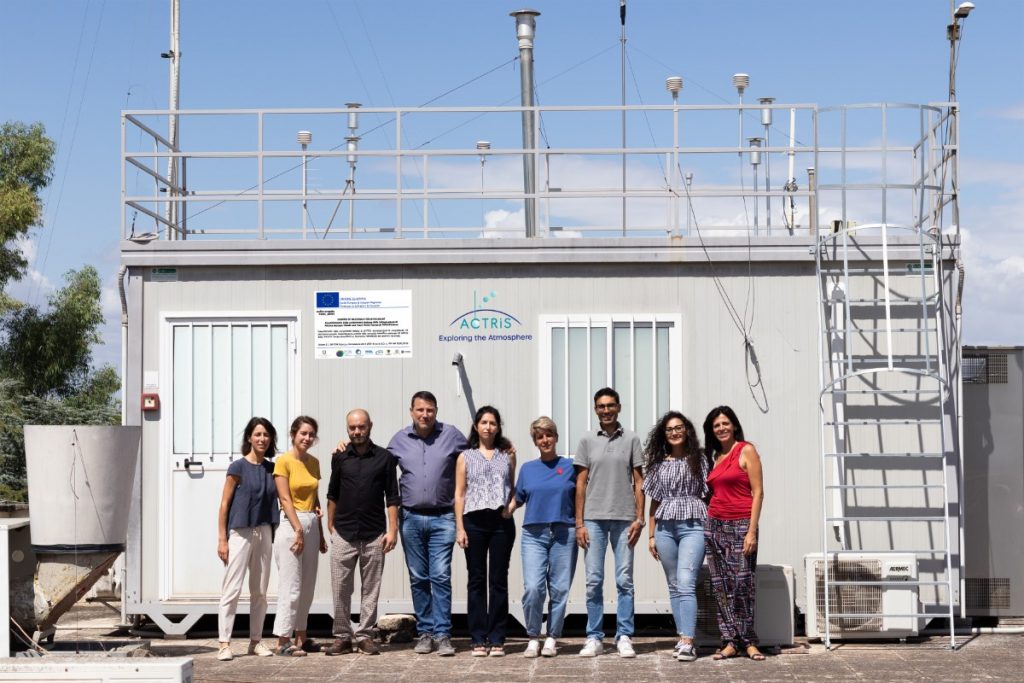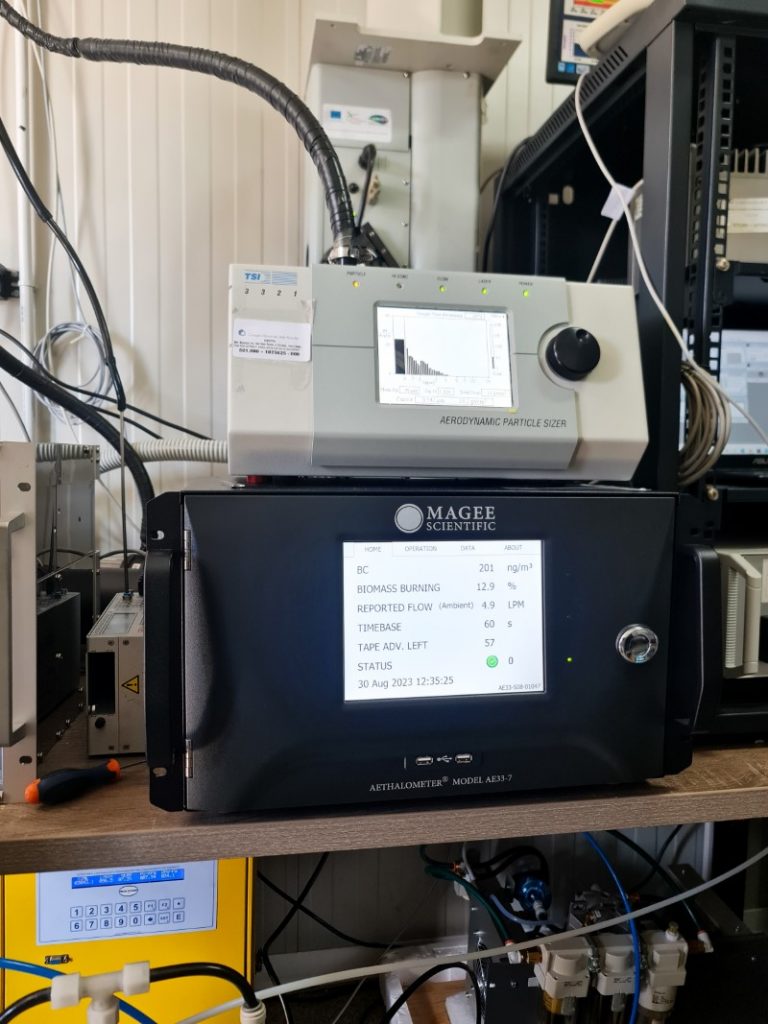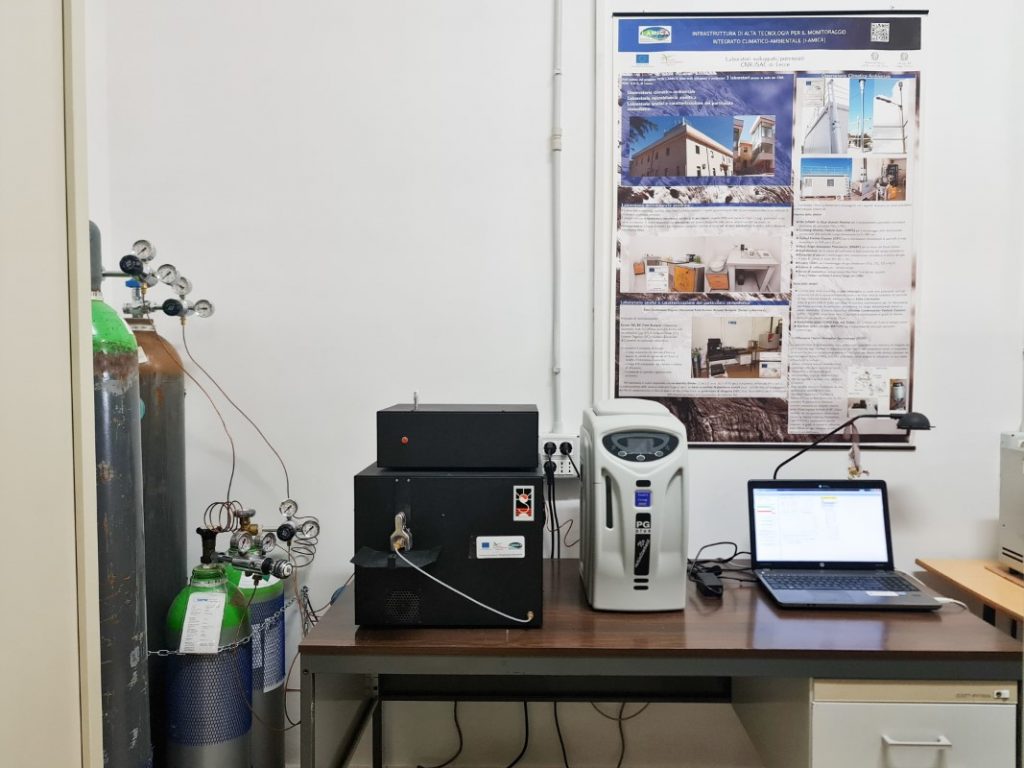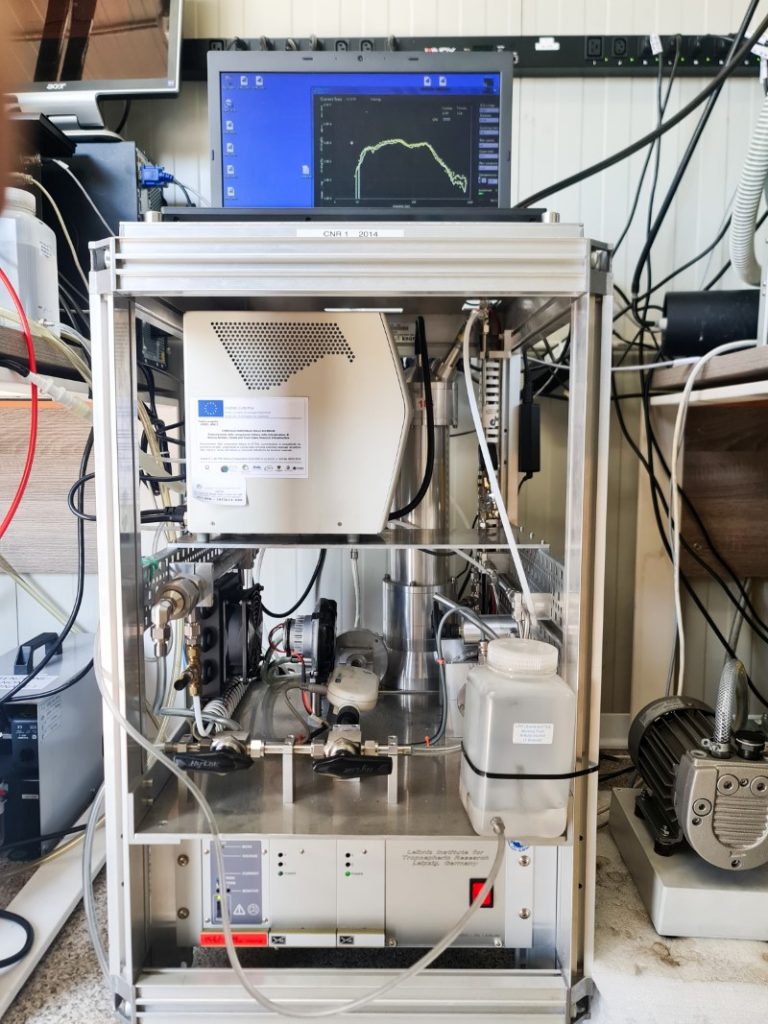Lecce - CNR ISAC Environmental Climate Observatory
The Environmental Climate Observatory of Lecce (ID: ECO) is a measurement station categorized as an urban background, located within the University Campus about 4 km (SW direction) from the center of the urban area of Lecce. The ECO site is minimally affected by anthropogenic sources of vehicular traffic, with significant vehicles only within the University Campus and nearby streets. However, it is influenced by short to medium-distance transport of biomass combustion emissions, both from residential heating and agricultural activities. There is also a contribution from long-range transport of natural aerosols (marine spray and crustal dust), and occasionally, anthropogenic aerosols from large industrial complexes located approximately 30 and 80 km from the site, as well as from Eastern Europe.
The prevailing wind directions at the site are along the axis of the Salento peninsula, with frequent strong winds from the N-NW and S-SE sectors. The thermal contrast between the land surface and the sea plays a significant role in determining the atmospheric circulation at the site through the development of complex sea-land breeze systems that extend into the Salento peninsula.
The ECO observatory is located about 11 km from the Adriatic Sea, 26 km from the Ionian coast, 100 km from the Balkan coast, and approximately 800 km from the North African coast, strategically positioned in the central Mediterranean area to investigate the chemical and physical properties of regional aerosols in a coastal vicinity. It also aims to study photochemical processes, air quality, and their implications for global changes in a climatic-environmental hotspot such as the Mediterranean.
Available instrumentation:
The available instrumentation includes both gas analyzers and instruments for characterizing atmospheric particulate matter. For atmospheric particulate matter: measurement of size distribution and number concentration (MPSS, CPC, APS, NAIS, and PSM); collection of samples on PM2.5 and PM10 filters followed by analysis of OC/EC, elements with ED-XRF, soluble carbon content (TOC), soluble ions content, and levoglucosan (IC); optical properties of particulate matter using MAAP, aethalometer, two nephelometers, and total carbon analyzer (TCA). Detection of non-refractory components of PM1 using TOF-ACSM; size distribution with two optical particle counters; fluorescence detection on single particles for bioaerosol identification.
For atmospheric gas measurements, analyzers are available for NO-NO2-NOx, O3, SO2, NH3, N2O, BTEX; a DOAS detector; a CRD technology analyzer for CO, CO2, CH4.
At the ECO observatory, continuous measurements are also made of the main meteorological parameters; key micrometeorological parameters; boundary layer height through PBL mixing monitoring (Radon); continuous monitoring of atmospheric aerosol along the site’s vertical using a single-wavelength mini lidar with depolarization.
The aerosol remote sensing component is managed by UniSalento (more information will be inserted shortly).
The exploratory platform MAGA (Mobile Laboratory for Gas and Aerosol measurements) complements the observatory. MAGA is a mobile laboratory equipped for online measurement of optical properties of particulate matter using aethalometer, nephelometer, and photometer (sun-lunar); number concentrations and size distributions using SMPS, CPC, OPC, and APS; concentrations of gaseous pollutants using analyzers for (NO-NO2-NOx, O3, SO2, CO). Additionally, filter samplers for PM2.5 and PM10 are available, which can benefit from offline analyses of chemical composition: OC/EC (Sunset); TOC-TN; elemental analysis (ED-XRF); analysis of major soluble ions and levoglucosan.
Links:
http://www.i-amica.it/i-amica/?page_id=661
https://gawsis.meteoswiss.ch/GAWSIS/#/search/station/stationReportDetails/0-20008-0-ECO
Bibliography
Massabò et al., AMT, 2018, doi: 10.5194/amt-11-5885-2018
Danelli et al., AMT, 2021, doi: 10.5194/amt-14-4461-2021
Vernocchi et al., AMT, 2022, doi: 10.5194/amt-15-2159-2022
Massabò, Prati, et al., in Practical Guide to Atmospheric Simulation Chambers, 2023. doi: 10.1007/978-3-031-22277-1
Crawford et al. Atmosphere, 2023, https://doi.org/10.3390/atmos14081214
Vernocchi et a., AMTD, 2023, https://doi.org/10.5194/egusphere-2023-1580






